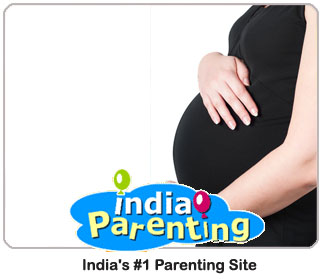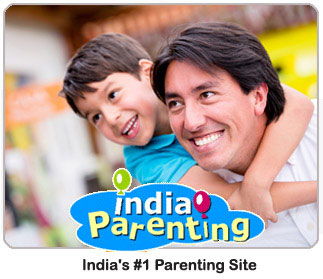 Name: Hema
Name: Hema
I'm enclosing an interesting article for all you adoptive parents-
Speaking Positively: Using Respectful Adoption Language
by Patricia Irwin Johnston
This short poem by Rita Laws first seen in OURS: The Magazine of Adoptive Families (now Adoptive Families magazine) attempts to point out humorously the impact of negative language in adoption...
Four Adoption Terms Defined
Natural child: any child who is not artificial.
Real parent: any parent who is not imaginary.
Your own child: any child who is not someone else's child.
Adopted child: a natural child, with a real parent, who is all my own.
Respectful Adoption Language (RAL) is vocabulary about adoption which has been chosen to reflect maximum respect, dignity, responsibility and objectivity about the decisions made by birthparents and adoptive parents in discussing the family planning decisions they have made for children who have been adopted. First introduced by Minneapolis social worker Marietta Spencer as postive adoption language or constructive adoption language and evolving over the past 20 years, the use of RAL helps to eliminate the emotional overcharging which for many years has served to perpetuate a societally-held myth that adoption is a second-best and lesser-than alternative for all involved--that in being part of an adoption one has somehow missed out on a \";real\"; family experience. The use of this vocabulary acknowledges those involved in adoption as thoughtful and responsible people, reassigns them authority and responsibility for their actions, and, by eliminating the emotionally-charged words which sometimes lead to a subconscious feeling of competition or conflict, helps to promote understanding among members of the adoption circle.
RAL begins with the concept of family. Historically people have been considered to be members of the same family when one or more of several conditions are met: they are linked by blood (father and son,) they are linked by law (husband and wife,) they are linked by social custom (woman and her husband's sister), they are linked by love. We don't blink at the concept of two non-genetically-related people being members of the same family if one or more of the other criteria are met...except in adoption.
Though in adoption parent and child are linked by love and by law, the fact that they are not connected by blood has often meant that some people are unwilling to acknowledge their relationship as genuine and permanent. Thus they use qualifiers (\";This is Bill's adopted son\";) in situations where they would not dream of doing so in a non-adoptive family (\";This is Bill's birth-control-failure son\"; or \";This is Mary's caesarean-section daughter.\";) They tend not to assign a full and permanent relationship to persons related through adoption (\";Do you have any children of your own?\"; or \";Have you ever met your real mother?\"; or \";Are they natural brothers and sisters?\";) They assume that adoptive relationships are tentative (\";Will the agency take him back now that you know he's handicapped?\"; or \";What if his real parents want him back?\";)
As the concept of family changes, it is important that we consistently acknowledge that any two people who choose to spend their lives committed to one another are indeed a family. A couple who has chosen a childfree lifestyle and a single parent with children are just as much families as is a married couple who has given birth to six children.
The reality is that adoption is a method of joining a family, just as is birth. It is a method of family planning, as are birth control pills or abortion. Though the impact of adoption must be acknowledged consistently in helping a person who has been adopted or one who has made an adoption to assimilate this issue positively, adoption should not be described as a \";condition.\"; In most articles or situations not centering on adoption (for example, during an introduction, in a news or feature story or an obituary about a business person or a celebrity) it is inappropriate to refer to the adoption at all. (An exception may be in an arrival announcement.) When it is appropriate to refer to the fact of adoption, it is correct to say \";Kathy was adopted,\"; (referring to they way in which she arrived in her family.) Phrasing it in the present tense-- \";Kathy is adopted\";--implies that adoption is a disability with which to cope.
Those who raise and nurture a child are his parents: his mother, father, mommy, daddy, etcThose who conceive and give birth to a child are his birthparents: his birthmother and birthfather. Technically, all of us have birthparents, however not all of us live in the custody of our birthparents. But increasingly those who have chosen adoption for the children to whom they have given birth but are not parenting are asking that the terms birthparent, birthmother, and birthfather be used exclusively to describe those who have already made such a plan. From this perspective it would be inappropriate to label a pregnant woman dealing with an untimely pregnancy a birthparent. Before she gives birth, she is an expectant parent. Not until she gives birth and actually chooses adoption would she be appropriately called a birthparent..
In describing family relationships involving adoption it is always best to AVOID such terms as real parent, real mother, real father, real family--terms which imply that adoptive relationships are artificial and tentative-- as well as terms such as natural parent and natural child--terms which imply that in not being genetically linked we are less than whole or that our relationships are less important than are relationships by birth. Indeed in adoption children will always have TWO \";real\"; families: one by birth and one by adoption. Similarly, when conscientiously using RAL, one would never refer to a child as one of your own, which intimates that genetic relationship is stronger and more enduring and adoptive relationships tentative and temporary.

















